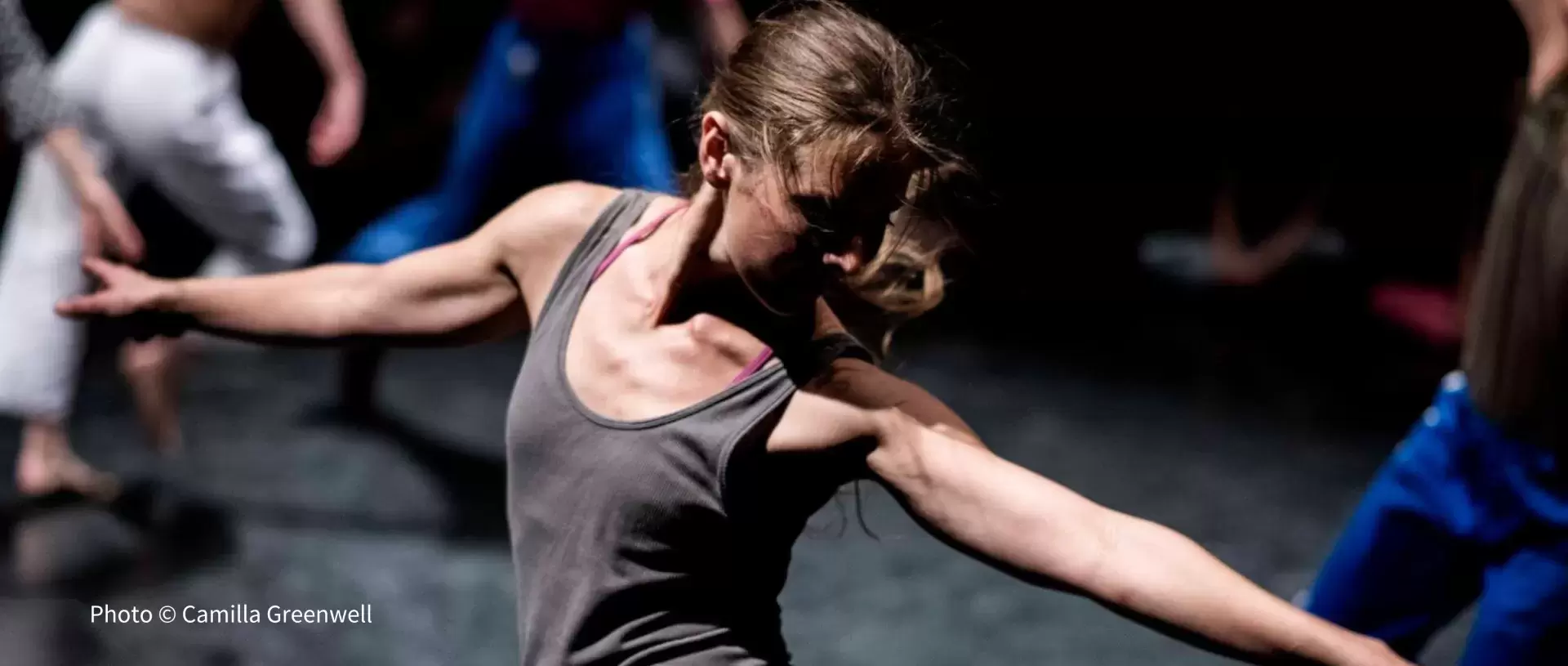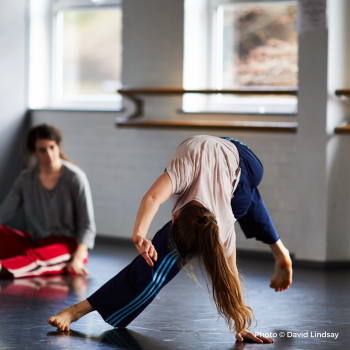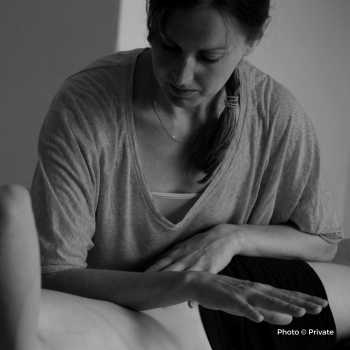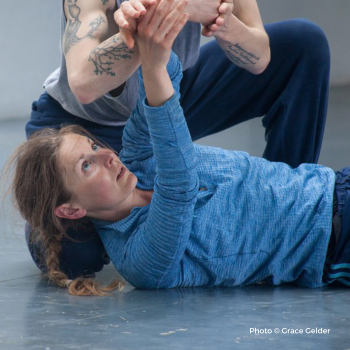By professional dancer Jennifer-Lynn Crawford
I started 'late' for my initial dance-passion, which was classical ballet - I began at a professional school when I was 16, which, for women in that part of the dance world, is fairly ancient. Most of my peers were apprenticing at companies when I was just starting my training in classes with the 13-year-olds. I was so enraptured with the feel of dancing and the kind of connection I felt when moving, but the professional training was deeply traumatic for my system - on many levels!
It ingrained on a deep level that my physical form was inadequate and very 'tight' (i.e., I did not have the kind of tissue laxity that many attracted to ballet do, nor the kind of hip joints needed to make ballet easy). The ‘military-esque’ approach to pedagogy that was standard at the school I attended did not do much to help me unwind my deep bracing. Indeed, it further confused my system:
How could something I so absolutely needed to do (dance) be so incredibly stressful?!"
There were also some deep early life attachment themes that were driving my need to move, attracted by the kind of hyper-vigilance to body sensation that many more codified dance forms (like ballet) normalize.
Body as ‘problematic object’
I became that always-injured person in training - even after I left ballet school and moved to a training in contemporary dance, I simply couldn't figure out how to dance without hurting myself.
I tried many therapies, though I stayed too long within the conventional body-as-object model of physiotherapy, working isolated ‘parts’ that didn't carry into my dancing."
Even as a fully-fledged professional dancer, I had been so strongly encultured into the idea that my body was problematic, requiring constant monitoring to stay in form, that our relationship was very distant. I barely lived my body, despite still needing the kind of connection I felt when moving and demanding it do so much every day.
Rolfing opened doors to new sensations
It was another 5 years before I had a first taste of Rolfing - and although I didn't experience the depth of connection that I now feel when I receive work from another Rolfer® or another skillful practitioner - much of my system was so deeply held up in an idea of body-as-object, body-as-obstacle, that it is a wonder my first Rolfer got anywhere at all.
I was so attracted by the possibility I sensed in Rolfing: I read Ida Rolf's book. I found more and more information through somatic forms.
That was all very exciting and hugely terrifying in generating and opening doors to sensations that my habitual tensions were holding fast."
I do think my first 10 series made enough of a dint in my experience to start the slow shift of big change.
Rolfing has taught me peripheral stabilization
I think particularly Rolfers with experience of movers with deeply embodied and specific trainings are uniquely able to empathize and connect with professional dancers. There is so much going on in a dancing body.
The surrounding context of most freelance dancers’ lives is so variable and precarious. I remember once in basic Rolfing training finding it very unnerving hearing the direction to find my periphery. I was already so peripherally oriented I couldn't comprehend the direction.
For me, I needed to figure out how to be focal. In other therapeutic modalities I think details of orientation, support, and particularly the attention to space and vectors, just don't enter into the conversation of change.
And this question of pre-movement and perception, as a mover, is so innate to how I am, so intrinsic to my craft, that I didn't know much about it, in a cortical way, until I learned with some very clear, compassionate, and skillful Rolfing teachers."
Discover the full scope of skills
Depending on what kind of movement world you work in (i.e. classical, commercial or more contemporary/post-modern forms), much of the information in dance comes packaged inside a vocabulary focused on the aesthetic.
The perceptual information which underlies it often doesn't get addressed explicitly. So many dancers don't know the full scope of their skills, and that's before we even begin to think about the performative demands of some dance forms. There is greater presence of somatic work and skilling that is helping to balance things recently, but the idea that perception is movement still sits to the side in many dance pedagogies.
That is where I feel Rolfing really shows up as a gift to movers:
It helps us understand why a therapeutic invitation to 'just stand' is distressingly complex, how our nervous systems respond to being watched by a practitioner so exquisitely quickly (never underestimate the power of compassionate witnessing for a performer!), and also how we find our systems having a significant response to a precisely and skillfully selected touch, feeling, or image.
My sensory intuition has been tuned by Rolfers
I experience Rolfing as the possibility to detail and enjoy my structural and physical inhabitation and embodiment but also how these relate and are co-created by perceptual orientations and codings, environments and relational dynamics.
I also notice that Rolfers and practitioners with experience of movers or performers can support us in our capacity to feel - rather than assuming - what a highly trained and open nervous system might be able to sense. I would not have the security and confidence in my sensory intuition without having been encouraged to listen and tune it by practitioners who recognized it - previously having been told by osteopaths and physiotherapists that there 'was no way' I could be feeling what I was feeling during their manipulations.
When my system and movement information is held in dialogue with a compassionate and spacious Rolfer, it's like a warm bath for my nervous system and tissues. As one of my important teachers often says: I can find my way back 'home' and the whole of me exhales."
Given how hard the dancing world works, and how much of our professional identity and survival is tied up in how we feel and how we might manifest different aspects of others' feeling through ourselves, we really need to ALSO feel held in order to unwind some of the doing and settle. Settling is so needed after all the doing, to let all the information process through and ground and make space for the next thing... otherwise, what are we performing?
Author: Professional dancer, Jennifer-Lynn Crawford - United Kingdom
Editing: Sabine Becker
Photos: Camilla Greenwell, David Lindsay, Grace Gelder.
Visit Jennifer-Lynn Crawford's website.
Learn more about Rolfing.
Find a Rolfer near you.
Train to become a Certified Rolfer®.
Want to know more?
Sign up for our newsletter and receive regular information about Rolfing® Structural Integration.










